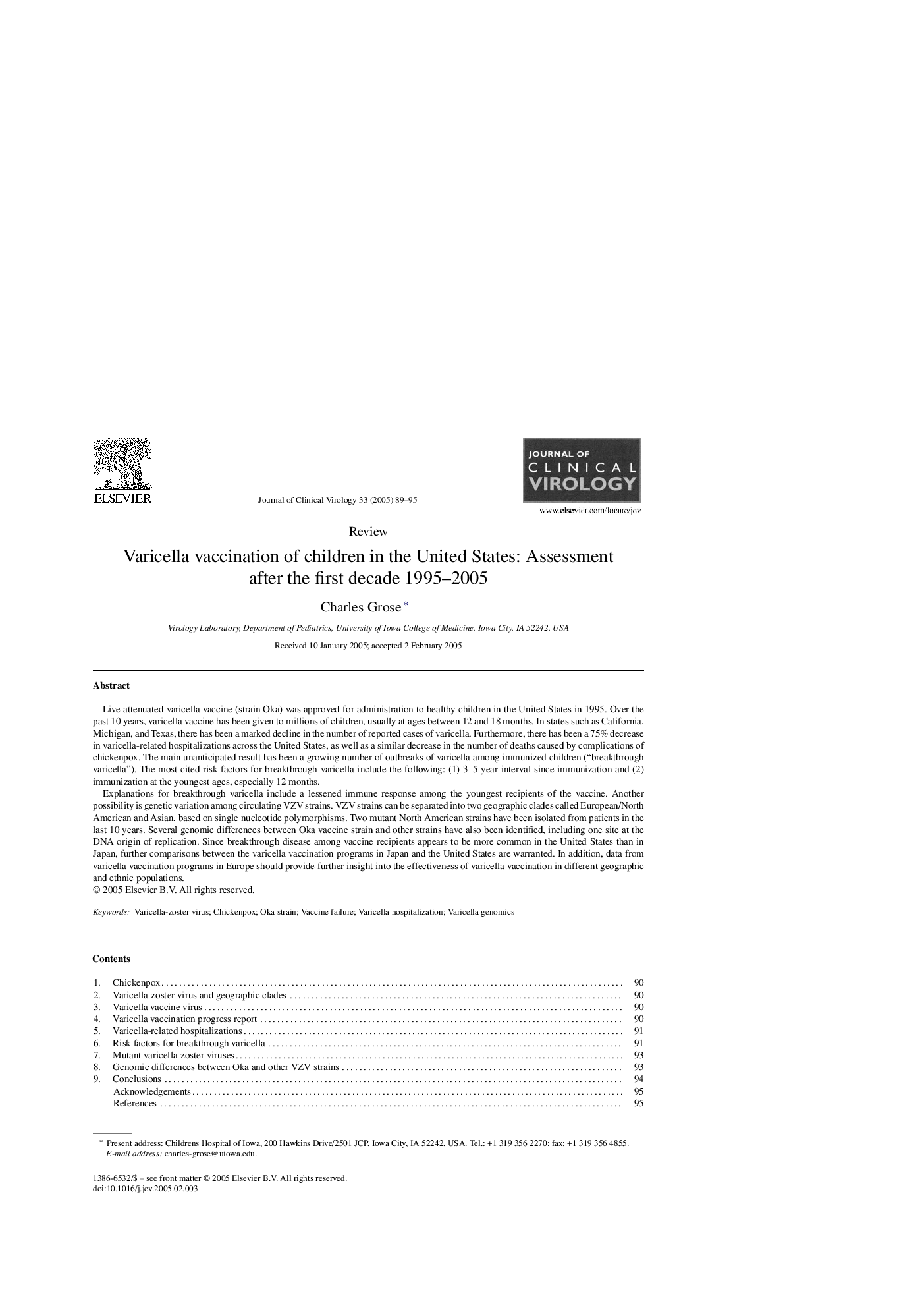| Article ID | Journal | Published Year | Pages | File Type |
|---|---|---|---|---|
| 9268375 | Journal of Clinical Virology | 2005 | 7 Pages |
Abstract
Explanations for breakthrough varicella include a lessened immune response among the youngest recipients of the vaccine. Another possibility is genetic variation among circulating VZV strains. VZV strains can be separated into two geographic clades called European/North American and Asian, based on single nucleotide polymorphisms. Two mutant North American strains have been isolated from patients in the last 10 years. Several genomic differences between Oka vaccine strain and other strains have also been identified, including one site at the DNA origin of replication. Since breakthrough disease among vaccine recipients appears to be more common in the United States than in Japan, further comparisons between the varicella vaccination programs in Japan and the United States are warranted. In addition, data from varicella vaccination programs in Europe should provide further insight into the effectiveness of varicella vaccination in different geographic and ethnic populations.
Related Topics
Life Sciences
Immunology and Microbiology
Applied Microbiology and Biotechnology
Authors
Charles Grose,
